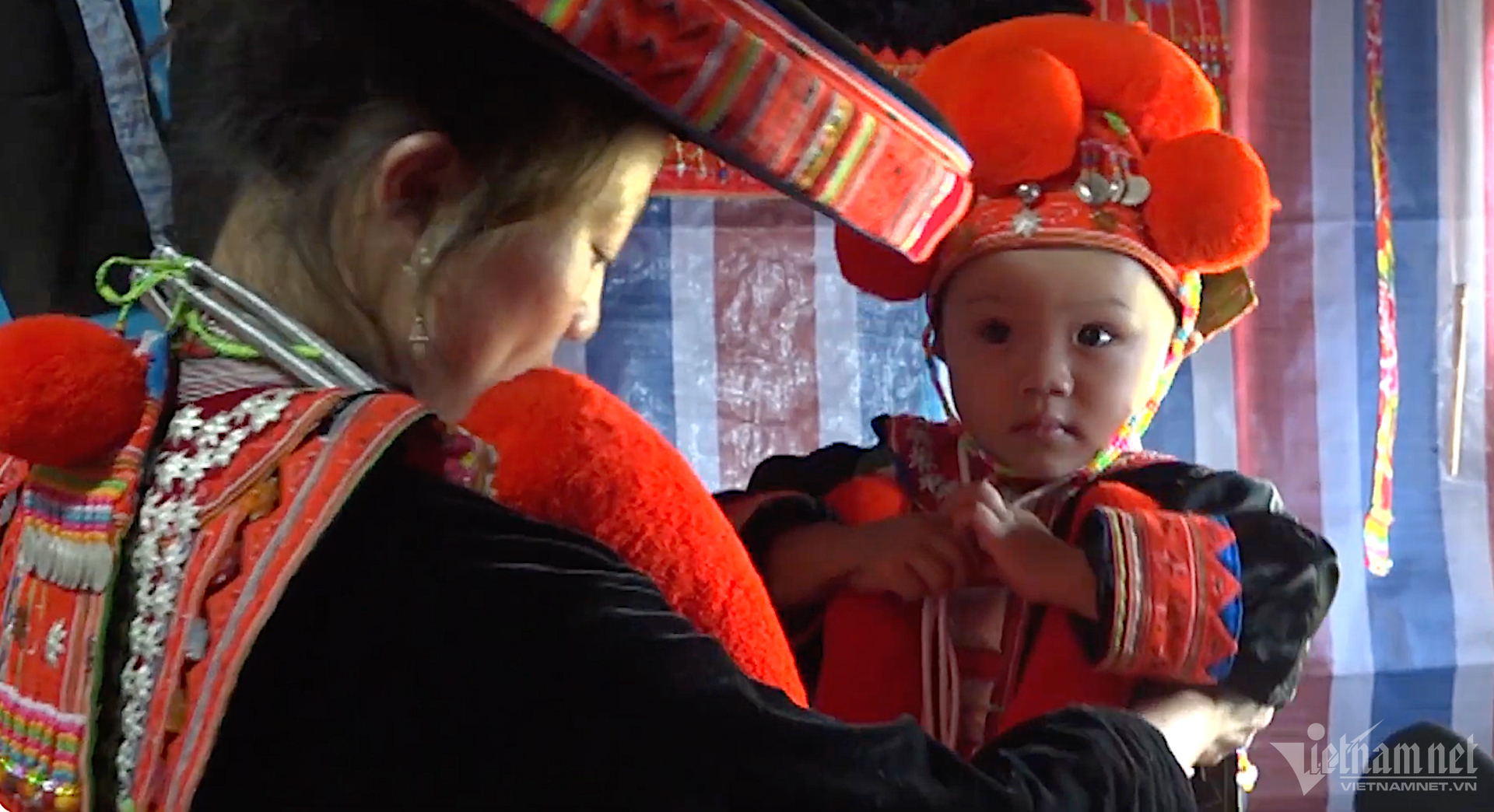
In Cao Bang province, the Dao people account for about 10% of the population with two groups: Red Dao and Dao Tien. They often live on high hillsides (mountainous areas) and relatively flat valleys of Nguyen Binh, Bao Lac, Bao Lam, Ha Quang districts...
The treasure of folk songs and dances of the Red Dao ethnic group in Cao Bang is quite massive in scale and rich in genre, melody and content. The characteristics are basically the same, but each melody is performed with different tones and sounds that can be smooth and soft; strong and majestic; or gentle or passionate... like the melodies of Pao Dung, Coong Dung, Phay Lui, Coong Phay, Lao Cu Ngoa, ...
Among folk dances of the Red Dao, the tortoise-catching (Piao To) dance is a unique one because it is unlike any other ethnic dance and has become the pride that has been preserved in the spiritual life of the Red Dao people in Cao Bang for many generations.
The Red Dao people do not know specifically when their unique turtle-catching dance originated. They only know that, when growing up, young men are taught this dance by their fathers and grandfathers.
This dance is performed by a group of men. When performing this dance, performers wear colorful costumes of the Red Dao ethnic people. They combine movements that simulate actions following the steps of catching turtles in the movements of the whole team in a skillful way, supported by traditional musical instruments like drums, gongs, flutes blending with the lyrics sung by the shaman.
According to old people who are knowledgeable about traditional Red Dao culture, the tortoise-catching dance is performed during holidays, such as: Praying for harvest, Ban Vuong ceremony, cap sac rituals... with the basic steps of the dance, including: Shuot to (departure); dien to (roll around to catch tortoises); dong to (poking a branch of tree into the cave to scare the tortoise out); schó to (catching tortoise); nghia to (bringing the tortoise home); pei to (put the tortoise on the table to weigh); schún to (stringing turtle meat); piu to (sharing tortoise meat).
In particular, during the cap sac ceremony, not all levels are allowed to perform the tortoise-catching dance. There are very specific regulations on this: In the cap sac ceremony of the Dao people, there are many levels. The first level is given 3 lights and 36 soldiers and horses; At level 2, it is given 7 lights and 72 soldiers and horses; The highest level is 12 lights and 120 soldiers and horses.
From level 2 or higher ceremonies of the cap sac rituals, the tortoise catching dance can be performed as one of the rituals of the ceremony. At the same time, the dance has the meaning of praying for the best things to come to brothers, relatives, and villagers, praying for a good harvest and a full life, thereby letting children and grandchildren know about their origins, contributing to promoting the strength of solidarity to develop the household economy and build a prosperous and happy life.
However, the introduction of new cultural streams due to lack of strict control has affected the cultural life and traditional cultural values of the Red Dao ethnic group. A part of the younger generation believes that some of their ethnic group’s intangible cultural heritages are backward and outdated, so they are not interested in inheriting and promoting them. At the same time, knowledgeable people and artisans of the Dao people are getting older... As a result, the tortoise catching dance of the Red Dao people is becoming increasingly rare and at risk of being lost or extinct.
Facing these challenges, restoring, preserving, and developing the value of the tortoise catching dance of the Red Dao people needs to be systematically implemented. The first task should be opening Dao language classes. Because once they know how to read and write their language, it will be a prerequisite for the younger generation to learn folk songs, thereby consciously preserving and promoting them.
On the other hand, it is necessary to raise awareness of Red Dao people on the meaning and importance of folk songs, especially the younger generation, to enhance pride in values of unique folk songs of their ancestors, thereby voluntarily participating in traditional cultural activities; organize Red Dao folk singing competitions in hamlets, communes, districts and provinces at fixed times and maintain them regularly to promote and serve tourists and researchers.